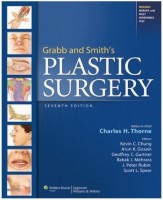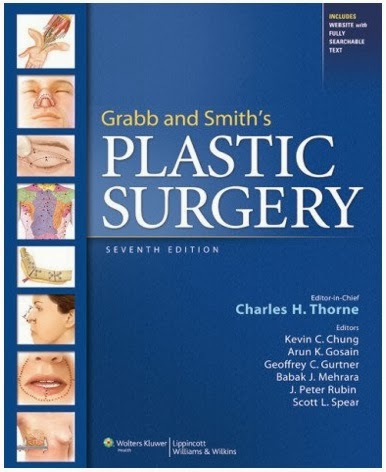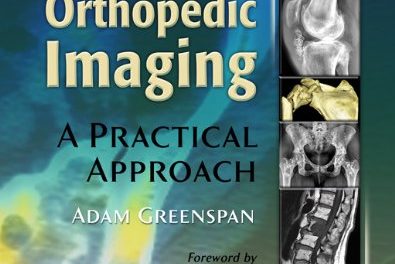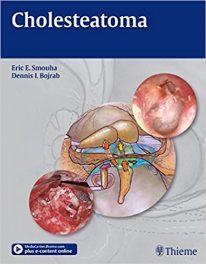Editor-in-Chief: Charles H. Thorne. Editors: Kevin C. Chung, Arun K. Gosain, Geoffrey C. Gurtner, Babak J. Mehrara, J. Peter Rubin, and Scott L. Spear
Publisher: Wolters Kluwer | Lippincott Williams & Wilkins
Book Review by: Nano Khilnani
With 167 contributing authors who are MDs, PhDs, or holders of various medical degrees from the United States, Australia, Canada, Singapore, South Korea, Taiwan, and United Kingdom, this book is truly an authoritative one.
And with 99 chapters on various types of plastic surgery involving many parts of the human body, this book has extensive if not comprehensive coverage of topics. It also covers the basic science, principles and techniques in the science and art of plastic surgery.
Plastic surgery is one of the most diverse types of surgery, covering the human body from the top of the head (including hair transplantation, for example) to the tip of the toes, including nails. Plastic surgeons work from top to bottom, so to speak. They work on combating baldness, all the way down to removing pesky toenails infected with fungus.
They work on the surface of the body such as removing dark spots from the skin, to removing the inside mass of bodies to make people slimmer, such as through liposuction.
So how extensive is the coverage of this massive tome of 1,030 pages? The nine Parts of this book cover everything from anomalies in our vast vascular system to brachioplasty to cleft palates to dermabrasion to excision of ellipses to facelifts to gynecomastia to hand fractures to injuries to the jaw to keratosis to lip reshaping to mammaplasty to nasal reconstruction to paralysis of the face to rhinoplasty to scar removal to tummy tucks, to vasoconstriction to wound care (to prevent scarring), and other procedures.
There’s much more material to be found inside this book on topics you want to study on. You can also access online all the contents of this book (and more) simply by scratching off the sticker found on the inside front cover of this book. Once you get the access code, enter it on http://solution.lww.com, and then follow the instructions
Here’s an overview of the material contained in this book:
• Part 1 – Principles, Techniques, and Basic Science
• Part 2- Skin and Soft Tissue
• Part 3 – Congenital Anomalies and Pediatric Plastic Surgery
• Part 4 – Head and Neck
• Part 5 – Aesthetic Surgery
• Part 6 – Breast
• Part 7 – Body Contouring
• Part 8 – Hand
• Part 9 – Trunk and Lower Extremity
One of the more interesting and popular procedures in plastic surgery is nasal reconstruction, casually referred to as a ‘nose job.’ What’s really involved if someone wants to reshape his or her nose? You will be surprised – a lot is involved!
Chapter 33 entitled Nasal Reconstruction discusses many of the considerations to take into account. There are many factors, issues, and possible mishaps to consider, before deciding if nasal reconstruction is for you. Among them (in the words of the author below) are:
• You, the patient – if a complex repair is involved, the surgeon must be aware that past surgical treatments for skin cancer, radiation, trauma or rhinoplasty may add scars, interfere with blood supply, impair healing, and exclude some of the reconstructive options
• Your nose – This is a central feature of high priority. For it to appear normal, the reconstructed nose must have proper dimension, volume, position, projection and symmetry. Will any part of the nose to be reconstructed appear abnormal?
• The wound – The approach to repair your nose will be influenced by the size, depth, and condition of the wound.
• Wound healing – The method of tissue transfer is chosen based on the wound vascularity and depth. Will there be a mismatch of texture and color between your skin and the grafted skin?
• Donor site – Donor materials are chosen by determining the dimension and quality of missing tissues, the available excess within the donor site, and its ability to be transferred as a skin graft over a vascularized bed or a flap on a vascular pedicle with an adequate arc of rotation.
There are other considerations in nasal construction, among which are: the nasal base platform, nasal lining, nasal support, and nasal cover.
At the end of this chapter are two important topics that the student needs to read carefully, namely Complications and Late Revision. A list of References for further reading is also provided.
This book is very extensive in coverage and very authoritative, and we provided the reasons at the outset of this review. We congratulate the authors of the articles in this book and the team of editors named below for their outstanding work.
Editor-in-Chief: Charles H. Thorne, MD – Associate Professor of Plastic Surgery at NYU Medical Center in New York, New York.
Editors:
Kevin C. Chung, MD, MS – Charles B.G, Nancrede Professor of Surgery at the Section of Plastic Surgery in the Department of Surgery; Professor of Orthopedic Surgery, Assistant Dean for Faculty Affairs, and Associate Director of Global REACH at the University of Michigan Medical School in Ann Arbor, Michigan.
Arun K. Gosain, MD – Division Head in Plastic Surgery, Ann & Robert H. Lurie Children’s Hospital of Chicago; and Professor of Plastic Surgery at Northwestern University Feinberg School of Medicine in Chicago, Illinois.
Geoffrey C, Gurtner, MD – Professor in the Department of Surgery at Stanford University School of Medicine in Stanford, California.
Babak J. Mehrara, MD – Associate Attending Physician in the Department of Surgery at Memorial Sloan-Kettering Cancer Center; and Associate Professor of Surgery at Weill Cornell University Medical Center in New York, New York.
J. Peter Rubin, MD – UPMC Endowed Professor and Chair in the Department of Plastic Surgery; Professor of Bioengineering and Director of Life After Weight Loss Body Contouring Program at the University of Pittsburgh and UPMC in Pittsburgh, Pennsylvania.
Scott L. Spear, MD – Professor in the Department of Plastic Surgery at Georgetown University Medical Center in Washington in the District of Columbia.








